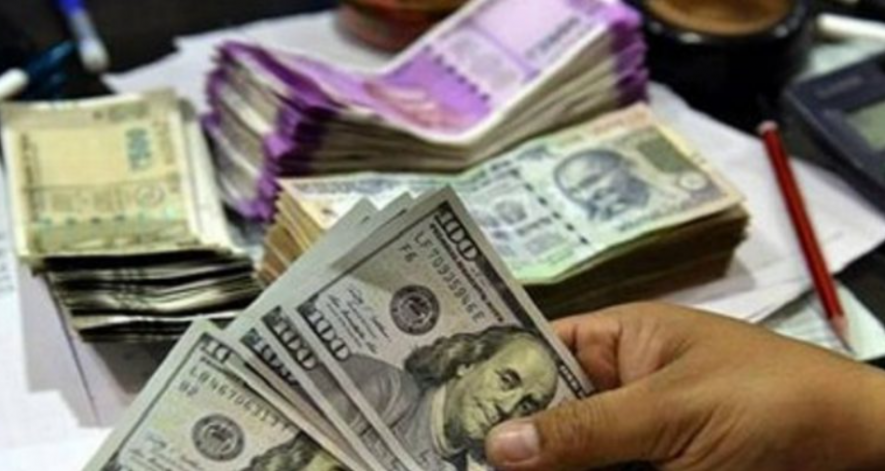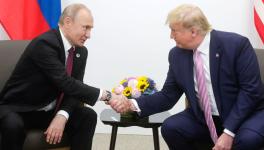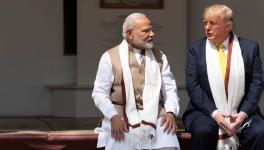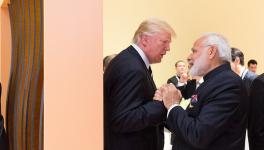How India Can Deal With America’s Dollar Tyranny

A recent admission in the sphere of international political economy offered a rare moment of candour. It stripped away diplomatic niceties and revealed the raw mechanics of strategic power: India may earn US dollars by exporting to the United States, but it can only recycle them as Washington permits. The abridgement of India’s autonomy by the structural tyranny of the US dollar has become transparent enough to be reported in the mainstream media.
The international reserve currency status of the dollar is often described as an “exorbitant privilege”, seemingly implying a quiet advantage for the US. Thereby, the US alone can finance its external deficits simply by issuing its own liabilities, while every other country must sweat for US dollars through attracting capital inflows or increasing exports. But the use of the dollar reserves of these countries is closely policed by the US government.
Previously, during the Bretton Woods system, “allies” were “persuaded” by the US to delay converting their dollars into gold. The methods of “persuasion” are more brazen today. Previously, the current Indian government meekly deferred to US demands to eliminate oil purchases from Venezuela and Iran. Now, India may be prevented by the US from using its dollar holdings to purchase discounted Russian oil.
Besides India, China, Turkey, Hungary, Slovakia, etc., import Russian oil, and other countries, including those in Europe, buy Russian natural gas, yet the US’s punitive measures are directed more aggressively against India. Why is this the case?
China has over time built its strategic prowess in a number of areas, including rare earths and other chemicals, including their refinement, magnets, capital goods, etc., for which there exist limited alternative suppliers. Therefore, US coercion against China will lead to strategically unacceptable consequences for the US (as became evident during Donald Trump’s trade war), which is why the US has backed off from directly coercing China.
Likewise, Turkey’s current perch on the US side of an ostensibly neutral strategic posture is crucial to US strategic interests in West Asia. Besides, Turkey is deeply reliant on Russian energy, which would create unacceptable consequences for Turkey if it snapped ties with Russia. Therefore, the US has till now avoided excessively coercing the Turkish government.
Hungary and Slovakia were importing Russian oil from the Druzhba pipeline and this was exempt from the unilateral sanctions imposed by the US and its European “allies”. But soon after the Alaska summit between the Russian and US presidents, the armed forces of Ukraine’s Zelenskyy administration fully disrupted oil supply through the Druzhba pipeline via armed attacks. On the face of it, President Trump expressed his anger at and opposition to these attacks. But it is most unlikely that the armed forces of the Zelenskyy administration could have mounted these attacks without the oversight or assistance or both of the US.
India’s susceptibility to US threats to eschew buying Russian oil has arisen because successive Indian governments have failed to build India’s strategic autonomy. But India is pressured by the US to recycle them into American defence contracts that involve neither technology transfer nor local production. Besides, the weapons so purchased may be subjected to post-facto policing of their use by means of contracts or software controls by the US. If all this is allowed to come about, then Indian sovereignty will be irredeemably diminished.
Reserve Seizure as Financial Warfare
Previously, the US had unilaterally frozen or gratuitously appropriated the dollar reserves of many countries with little blowback. But a crucial line was crossed when the foreign reserves of Russia were frozen in 2022. This unilateral freezing of nearly $300 billion in Russian central bank reserves by the US and its “allies” has already demonstrated that national savings abroad are no longer secure. Legislative moves in the US to channel these unilaterally frozen assets into funding the war in Ukraine mark a watershed moment: foreign exchange reserves are now openly weaponised. Russia has responded with decrees authorising the seizure of assets of firms based in the US and its “allies” inside its territory.
Strategic gaming exercises in the West have also examined the scenario of immobilising China’s vast foreign exchange reserves and how China would retaliate. Any such move would devastate world markets, freeze trade finance, and destabilise the dollar’s role as the international reserve currency.
The unilateral freezing of Russia’s foreign exchange reserves has already increased the sovereign risk of holding dollar-denominated assets, including US government securities. This, along with the inflation unleashed by the economic war against Russia, has compelled the US Federal Reserve to increase its policy interest rate. Moreover, the intensification of trade war against China and the degree of unwillingness of international rentiers to hold dollar-denominated assets were directly proportional. All this is reflective of the diminishing strategic heft of the US and its diminishing ability to ensure that prices of commodities in the world market will be denominated in dollars and also remain bounded in both directions.
But the current Indian government’s procrastination with respect to BRICS-led efforts at de-dollarisation has left India vulnerable to financial coercion by the US.
India’s Trade Vulnerability
India’s vulnerability to financial coercion by the US is reinforced by its trade relationships with the world. Indian exports to the US are of a magnitude that is high enough and homogeneous enough in composition to make it vulnerable to coercion by the US, as is currently the case.
After the economic war against Russia began in 2022, India began to explore alternatives to trading in dollars. But fatuously, this exploration did not involve the Chinese Renminbi. Therefore, the Indian government’s attempts to establish a rupee–rouble trade arrangement did not make headway since the Russian government could not use its rupee reserves to buy goods from an India that has a relatively less diversified manufacturing sector. The other option to deploy these rupee reserves to enhance Russian foreign direct investment in India also did not make much headway, since the profit expectations on such investment are not high enough to warrant it. Consequently, trade between Russia and India reconverted, directly and indirectly, to the dollar.
Indian governments have demonstrated little understanding of this threat from US coercion, especially the current Indian government. Though there are some limited efforts that are ongoing to explore trade opportunities with other countries and organisations, such as the Eurasian Economic Union, trade policy initiatives are at best halting.
This inflexibility is partly on account of Indian monopoly capital’s entanglement with US-centred international financial capital and partly on account of the Indian government itself being contingently constituted by this entanglement. Therefore, it is not surprising that there are a number of voices in India that argue that India’s acquiescence to US demands on trade and finance is in India’s own interests, or that such acquiescence is the optimal alternative for India.
Towards Regaining Strategic Autonomy
The current Indian government (and Indian cosmopolitan neo-liberals generally) seems to be fixated on pursuing the will-o’-the-wisp of a strategic concord between the US and India to purportedly contain China. Therefore, these cosmopolitan neo-liberals opine that either Trump should be waited out till another India-friendly US president is in place, or till Trump changes his mind. Such claims betray a complete divorce between policy-making and the foundations of international political economy. Therefore, the current Indian government is unable to move toward making the Indian economy resilient to coercion by the US.
The restoration of authentic strategic autonomy requires a strategy grounded in economic sovereignty rather than vacuous slogans. Relevant policy measures in this regard would include:
1. Strategic de-dollarisation: India would need to work along with other BRICS members to accelerate moves toward deployment of alternatives to the dollar in both trade and finance (including diversification of composition of foreign exchange reserves and developing payment systems beyond the Society for Worldwide Interbank Financial Telecommunication or SWIFT). The greater the collective weight of countries that initiate such moves, the more resilient they will be in resisting coercive actions by the US. Such moves toward de-dollarisation logically require expanding bilateral and regional trade arrangements across Asia, Africa, and Latin America.
2. Capital Controls: India would need to fundamentally break with the neo-liberal project by instituting capital controls on US-centred international financial capital (and therefore the domestic corporate-financial oligarchy). This would enable Indian policy-making to deploy fiscal policy as part of an industrial policy to both relevantly ascend the technological ladder pertaining to global production networks (through the incorporation of geographically diversified greenfield FDI on mutually beneficial terms in relevant sectors) while centering economic activity around domestic demand.
3. Developing alternatives to US-dominated international institutions through the strengthening of institutions, such as the New Development Bank as a credible alternative to the International Monetary Fund and World Bank.
Even while conceding the vulnerabilities of dollar dominance, mainstream policymakers tend to fall back on the language of “de-risking” and snail-paced changes. Thereby, they reduce the structural tyranny of the dollar to questions of technical adjustment. This amounts to obscuring the fact that financial coercion is already being wielded by the US.
Portraying de-dollarisation as a distant aspiration tends to normalise India’s attenuated strategic autonomy with respect to the US. However, the urgency of the present demands not procrastination but planned and definite moves for capital controls and collective de-dollarisation in tune with BRICS and related South–South financial architectures that can be resilient to financial coercion.
Conclusion
The candour of recent admissions by denizens of the US unmasks the reality of the strategic tyranny of the dollar.
Authentic sovereignty in the 21st century cannot be confined to barren rhetoric. It requires measures such as de-dollarisation, capital controls, and developing alternatives to US-dominated international institutions.
It is time Indian policy stopped its pursuit of the will-o’-the-wisp of a strategic concord between the US and India to supposedly contain China. Instead, India could deepen South–South cooperation and seek to reclaim economic sovereignty. Else, India’s strategic autonomy will shrivel into a myth cloaked in empty rhetoric, masking a deeper acquiescence to US hegemony. Since the current Indian government is not equal to this task, the quest for authentic strategic autonomy intertwines with the quest for a political alternative domestically.
Shirin Akhter is Associate Professor at Zakir Husain Delhi College, University of Delhi. C Saratchand is Professor, Department of Economics, Satyawati College, University of Delhi. The views are personal.
Get the latest reports & analysis with people's perspective on Protests, movements & deep analytical videos, discussions of the current affairs in your Telegram app. Subscribe to NewsClick's Telegram channel & get Real-Time updates on stories, as they get published on our website.
























